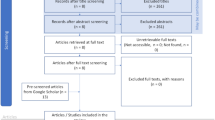Abstract
With the rapid advancements made in biotechnology, bioethical discourse has become increasingly important. Bioethics is a multidisciplinary and interdisciplinary field that goes beyond the realm of natural sciences, and has involved fields in the domain of the social sciences. One of the important areas in bioethical discourse is religion. In a country like Malaysia, where Muslims make up the majority of the population, Islam plays a crucial role in providing the essential guidelines on the permissibility and acceptability of biotechnological applications in various fields such as medicine, agriculture, and food processing. This article looks at the framework of a complementary model of bioethics derived from the perspective of Islam. The framework is based on ‘maqasid al-shariah’ (purposes or objectives of Islamic law) which aims to protect and preserve mankind’s faith, life, intellect, progeny, and property. It is proposed that ‘maqasid al-shariah’ be used as a pragmatic checklist that can be utilized in tackling bioethical issues and dilemmas.
Similar content being viewed by others
References
Al-Mawdudi, A. A. (2010). Towards understanding Islam. Kuala Lumpur: Dar Al Wahi Publications.
Al-Qaradawi, Y. (1988). Al-Fatwa Bayna al-Indibat wa al-Tasayyub. Cairo: Dar al-Sahwah.
Al-Qarafi. (2000). Nafa’is al-Usul fi Syarh al-Mahsul, Juz 4. Beirut: Dar al-Kutub al-‘Ilmiyah.
Arieff Salleh, R. (2002). Harta Intelektual Menurut Fiqh Islam: Pendekatan Perbandingan dengan Undang-undang Malaysia. Skudai: UTM Press.
Baker, R. (2007). A history of codes of ethics for bioethicists. In L. A. Eckenwiller & F. G. Cohn (Eds.), The ethics of bioethics: Mapping the moral landscape (pp. 24–40). Baltimore: The John Hopkins University Press.
Beauchamp, T. L., & Childress, J. F. (1994). Principles of biomedical ethics (4th ed.). Oxford: Oxford University Press.
Beauchamp, T. L., & Walters, L. R. (2003). Contemporary issues in bioethics. Belmont: Wadsworth Pub. Co.
Cahill, L. S. (1990). Can theology have a role in “public” bioethical discourse? The Hastings Center Report, 20(4), 10–14.
Callahan, D. (1999). The social sciences and the task of bioethics. Dedalus, 128(4), 275–294.
Campbell, C. S. (1990). Religion and moral meaning in bioethics. The Hastings Center Report, 20(4), 4–10.
Chattopadhyay, S., & De Vries, R. (2008). Bioethical concerns are global, bioethics is Western. Eubios Journal of Asian and International Bioethics, 18(4), 106–109.
Daar, A. S., & Al-Khitamy, A. B. (2001). Bioethics for clinicians: Islamic bioethics. Canadian Medical Association Journal, 164(1), 60–63.
Iltis, A. (2006). Look who’s talking: The interdisciplinarity of bioethics and the implications for bioethics education. Journal of Medicine and Philosophy, 31, 629–641.
Ismail, I. (2012). Development of ‘fatwas’ with special attention to bioethical issues. Paper presented at the international conference “Health Related Issues and Islamic Normativity” organised by the Asia-Africa Institute, University of Hamburg, Germany on 20th–23rd June 2012.
Kamali, M. H. (1991). Principles in Islamic jurisprudence. Cambridge: The Islamic Texts Society.
Kant, I. (1993). Groundwork of the metaphysic(s) of morals (3rd ed). Translated by Ellington, J.W. Indianapolis: Hackett Publishing Co.
Macer, D. R. J. (Ed.). (2004). Bioethics for informed citizens across cultures. Christchurch: Eubios Ethics Institute.
Marty, M. E. (1992). Religion, theology, church, and bioethics. The Journal of Medicine and Philosophy, 17, 273–289.
McGinn, R. E. (1991). Science, technology, and society. New Jersey: Prentice Hall.
Messikomer, C. M., Fox, R. C., & Swazey, J. P. (2001). The presence and influence of religion in American bioethics. Perspectives in Biology and Medicine, 44(4), 485–508.
Moosa, E. (2005). Muslim ethics? In W. Schweiker (Ed.), The Blackwell companion to religious ethics (pp. 237–243). Malden: Blackwell.
Muhammad, R. M. (2011). Peranan institusi keagamaan dan institusi pengajian tinggi awam (IPTA) dalam menganalisis isu bioetika: Ke arah pembentukan panduan kepada pengguna bioteknologi di Malaysia (The role of religious institutions and the public institutions of higher education in analyzing bioethical issue: Towards formulation of guideline for consumer of biotechnology in Malaysia). Unpublished thesis, University of Malaya, Kuala Lumpur.
National Biotechnology Policy. (2005). Biotechnology for wealth creation and social well-being: The way forward. Putrajaya: Ministry of Science, Technology and Innovation Malaysia.
Nyazee, I. A. K. (2002). Theories in Islamic law: The methodology of Ijtihad. Kuala Lumpur: The Other Press.
Population and Housing Census, Malaysia. (2010). Putrajaya: Department of Statistics Malaysia. Retrieved September 20, 2012 from: http://www.statistics.gov.my/portal/index.php?option=com_content&view=article&id=1215%3Apopulation-distribution-and-basic-demographic-characteristic-report-population-and-housing-census-malaysia-2010-updated-2972011&catid=130%3Apopulation-distribution-and-basic-demographic-characteristic-report-population-and-housing-census-malaysia-2010&Itemid=154&lang=en.
Reich, W. T. (Ed.). (1995). Encyclopedia of bioethics (2nd ed.). New York: Simon & Schuster MacMillan.
Ridzwan, A. (2004). Standard maslahah dan mafsadah dalam penentuan hukum Islam semasa di Malaysia (The standards for public interest and harm in determining Islamic law in Malaysia). Unpublished thesis, University of Malaya, Kuala Lumpur.
Siddiqui, A. (1997). Ethics in Islam: Key concepts and contemporary challenges. Journal of Moral Education, 26(4), 423–431.
Solihu, A. K. H., & Ambali, A. R. (2011). Dissolving the engineering moral dilemmas within the Islamic ethico-legal praxes. Science and Engineering Ethics, 17, 133–147.
Waller, B. N. (2005). Consider ethics: Theory, readings and contemporary issues. New York: Pearson Longman.
Wind, J. P. (1990). What can religion offer bioethics? The Hastings Center Report, 20(4), 18–20.
Zaidan, A. K. (2001). Al-Wajiz fi Usul al-Fiqh. Beirut: Muassasah al-Risalah.
Author information
Authors and Affiliations
Corresponding author
Rights and permissions
About this article
Cite this article
Saifuddeen, S.M., Rahman, N.N.A., Isa, N.M. et al. Maqasid al-Shariah as a Complementary Framework to Conventional Bioethics. Sci Eng Ethics 20, 317–327 (2014). https://doi.org/10.1007/s11948-013-9457-0
Received:
Accepted:
Published:
Issue Date:
DOI: https://doi.org/10.1007/s11948-013-9457-0




